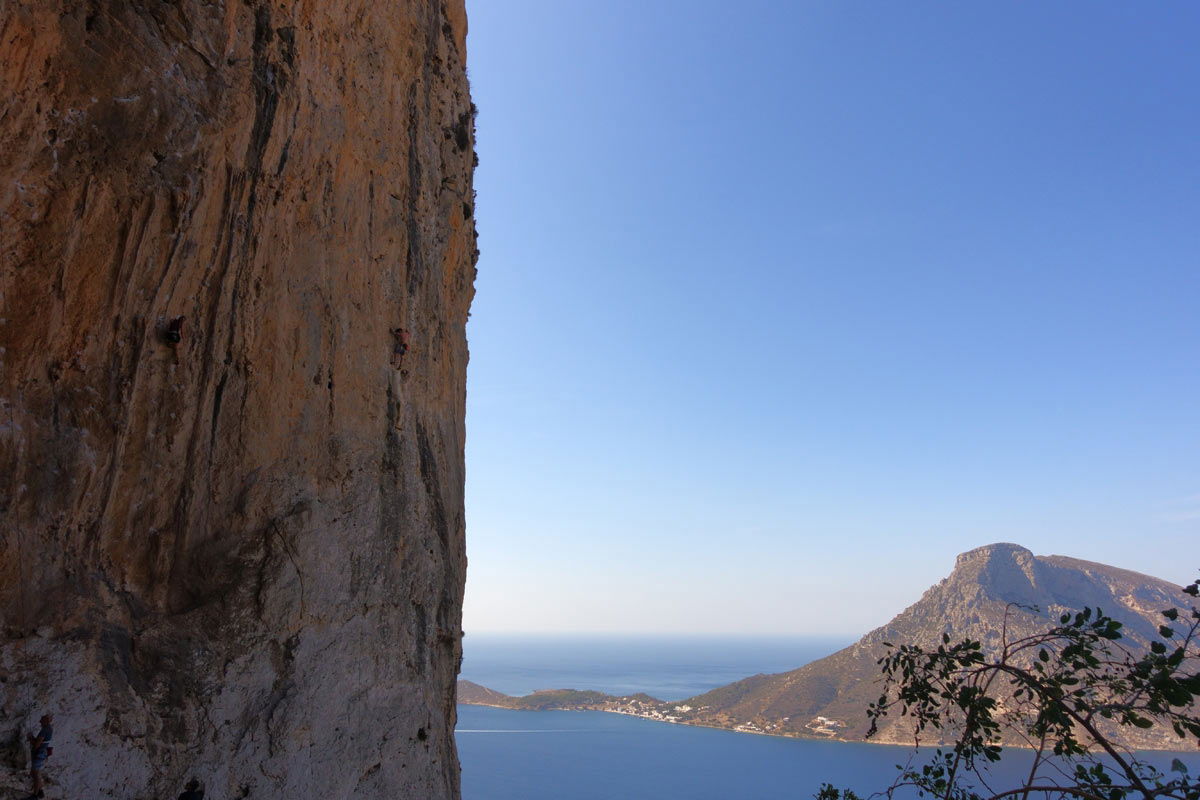Sport Climbing
These notes are intended to assist the climber who has already gained some knowledge of rock climbing and is fully aware of its risks but still wishes to progress further up the grades, and indeed the mountains. They are brief and not designed to be comprehensive in any way.
Ultimately climbing is a dangerous sport and claims many casualties each year. One of the guiding principals of British climbing and mountaineering is that it is the individual climber is responsible for his or her own safety. If you cannot accept this then this site and probably climbing in general is unlikely to suit you. May we refer you to this very interesting site instead!
Sport climbing is another name for climbs that are protected by bolts rather than natural gear such as nuts, slings and camming devices. The requirements for sport routes are generally simple, rockboots, harness, rope and quickdraws, and because of the small amount of equipment required and the perceived safety and simplicity of use of bolts runners and belays, sport routes have a large popular appeal. This has made Spain, the South of France, and even Thailand, regular winter holiday destinations for thousands of sun-starved British climbers.
Strictly speaking sport climbing means routes which are entirely protected by bolts. However even in recognised sport climbing areas such as Spain not all routes are bolt protected and for many of the higher crags in particular a full rack should be taken. Even on total bolt protected crags, the bolt protection maybe fairly sporting and a few wires will not go amiss, especially if you get off route.
Photo Left: The Penon, Calpe, on Spain's Costa Blanca - Cheap flights, food and accommodation and classic long routes by the sea.
Below: Christian Chalfont on Ekavi (6b), Iliada, Kalymnos - one of the best sport climbing destinations in the world.
Jim Arnold at Gandia with the Penon in the distance, on Spain's Costa Blanca, one of the most popular destinations for Brits.
An impressively steep climb at Odyssey, Kalymnos, Greece.
Sally Reid on the final easy ridge scramble of the classic Albahida (4+), Sa Gubia, Mallorca. Only the stances are bolted and a small rack should be carried.
For pure sport routes the following extra equipment is recommended :
| Rope |
Though it is possible to do any sports routes with the traditional British double 50m ropes, if the pitches are longer than 25m, which they usually are, this will involve complex ropework on the part of the leader in untying and threading a rope through the chain. While a 70m, or better an 80m, single rope is not essential it does make life a lot easier as many pitches are 35m or even 40m long and being able to lower back down without having to retie/rethread is a much simpler and safer. What diameter to go for is a matter of choice dependant on what other uses you might have for the rope. If purely for sports climbing then a 10mm is ideal being highly abrasion resistant, easy to handle and to stop falls with. However such a rope is heavy for high mountain use or on long pitches so the all-round climber might consider a 9.5mm (or even slimmer) single rope as a compromise between weight, wear and tear, and safety. There is no real need for the rope to be dry treated unless it is also intended to use it for alpine or winter climbing.
It is vital that the second ties in to the rope prior to belaying, or at least ties a knot in the spare end of the rope, to prevent the leader being dropped if the rope turns out to be too short for lowering off to the ground. Numerous accidents have occurred because this simple sensible step has been neglected.
|
| Belay Device |
To go with your single rope, it is well worth investing in a special sport climbing belay device which is designed to lock off the rope automatically in a fall. Some such as the Petzl Grigri are very sophisticated and have moving parts. However, it is also possible to use them wrongly and this has been the cause of several accidents. We prefer simpler no moving parts devices such as the Mammut Smart which work very smoothly once one is used to them and which are nigh on foolproof. |
| Quickdraws |
Eighteen should do for just about anything though it is worth taking a few spares in case you drop one. Most climbers prefer solid gate krabs with a curved gate at the lower end as these are easier to clip. It is important to always clip the bolt with the straight gate and the rope into the curved gate as bolts can create nicks in karabiners which can later damage the rope if the quickdraw is used the wrong way round. To cut down on rope drag it is worth having an assortment of lengths to choose from. It is also worth taking an old krab or maillon or two that can be left in place to retreat off. |
| Ropebag |
Very useful: a ropebag is a sort of roll-up ground sheet which obviates the need for coiling the rope and also protects it from dust and grit. |
| Helmet |
While not much worn on the single pitch stuff, on any multipitch crag there is likely to be (a) debris and (b) other climbers around - you know it makes sense! |
| Insurance |
Ditto! |
| Guidebooks |
There are numerous publishers of sport climbing guides, and many of them are in English - see our Guidebooks Section for what is easily available. |

Climbing at Spartacus on Kalymnos, with the island of Telendos in the background.